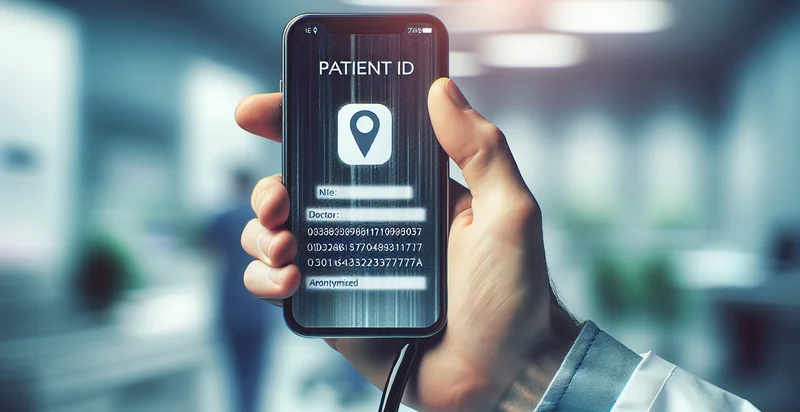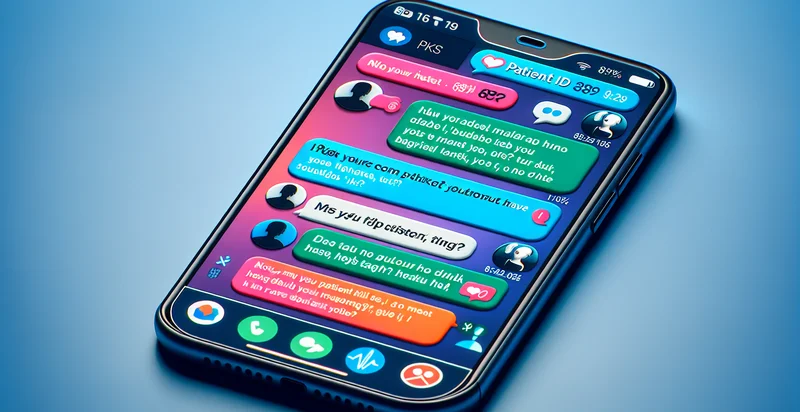Identify if patient id is in text
using AI
Below is a free classifier to identify if patient id is in text. Just input your text, and our AI will predict if the patient ID is present in the text - in just seconds.

Contact us for API access
Or, use Nyckel to build highly-accurate custom classifiers in just minutes. No PhD required.
Get started
import nyckel
credentials = nyckel.Credentials("YOUR_CLIENT_ID", "YOUR_CLIENT_SECRET")
nyckel.invoke("if-patient-id-is-in-text", "your_text_here", credentials)
fetch('https://www.nyckel.com/v1/functions/if-patient-id-is-in-text/invoke', {
method: 'POST',
headers: {
'Authorization': 'Bearer ' + 'YOUR_BEARER_TOKEN',
'Content-Type': 'application/json',
},
body: JSON.stringify(
{"data": "your_text_here"}
)
})
.then(response => response.json())
.then(data => console.log(data));
curl -X POST \
-H "Content-Type: application/json" \
-H "Authorization: Bearer YOUR_BEARER_TOKEN" \
-d '{"data": "your_text_here"}' \
https://www.nyckel.com/v1/functions/if-patient-id-is-in-text/invoke
How this classifier works
To start, input the text that you'd like analyzed. Our AI tool will then predict if the patient ID is present in the text.
This pretrained text model uses a Nyckel-created dataset and has 2 labels, including Patient Id Absent and Patient Id Present.
We'll also show a confidence score (the higher the number, the more confident the AI model is around if the patient ID is present in the text).
Whether you're just curious or building if patient id is in text detection into your application, we hope our classifier proves helpful.
Related Classifiers
Need to identify if patient id is in text at scale?
Get API or Zapier access to this classifier for free. It's perfect for:
- Patient Data Retrieval: This function can be integrated into electronic health record (EHR) systems to quickly verify if patient-specific information is included in text logs or documentation. By identifying patient IDs, healthcare providers can ensure that data is accurately associated with the correct individual, improving patient safety and care continuity.
- Insurance Claims Processing: In claims processing, insurers can use this classification function to automatically extract patient IDs from submitted documents. This improves the efficiency of claim verification and helps to prevent fraudulent claims by ensuring that claims are tied to legitimate patient records.
- Clinical Research Data Analysis: Researchers can apply this function to large datasets to identify and anonymize patient information that is stored in study-related texts. This ensures compliance with data protection regulations while maintaining integrity in tracking patient contributions to clinical trials.
- Appointment Management: Healthcare facilities can utilize this function to analyze appointment notes and texts for patient IDs. By ensuring that communications regarding appointments are correctly matched to the appropriate patient ID, organizations can enhance scheduling accuracy and reduce no-show rates.
- Medication Safety Monitoring: Pharmacists can implement this function in their systems to sift through medication orders and alerts for references to specific patient IDs. This helps to prevent medication errors and ensures that all patient-related parameters, like allergies or contraindications, are considered before dispensing medications.
- Telehealth Session Documentation: During telehealth sessions, practitioners can use this function to confirm that session notes contain the relevant patient identifiers. This aids in maintaining correct documentation, ensuring that all patient interactions are appropriately logged under the corresponding individual’s profile.
- Patient Feedback Analysis: Organizations can analyze patient feedback collected through surveys or online reviews using this classification tool. By identifying mentions of patient IDs, healthcare providers can better understand individual experiences and improve services tailored to specific patient needs.


